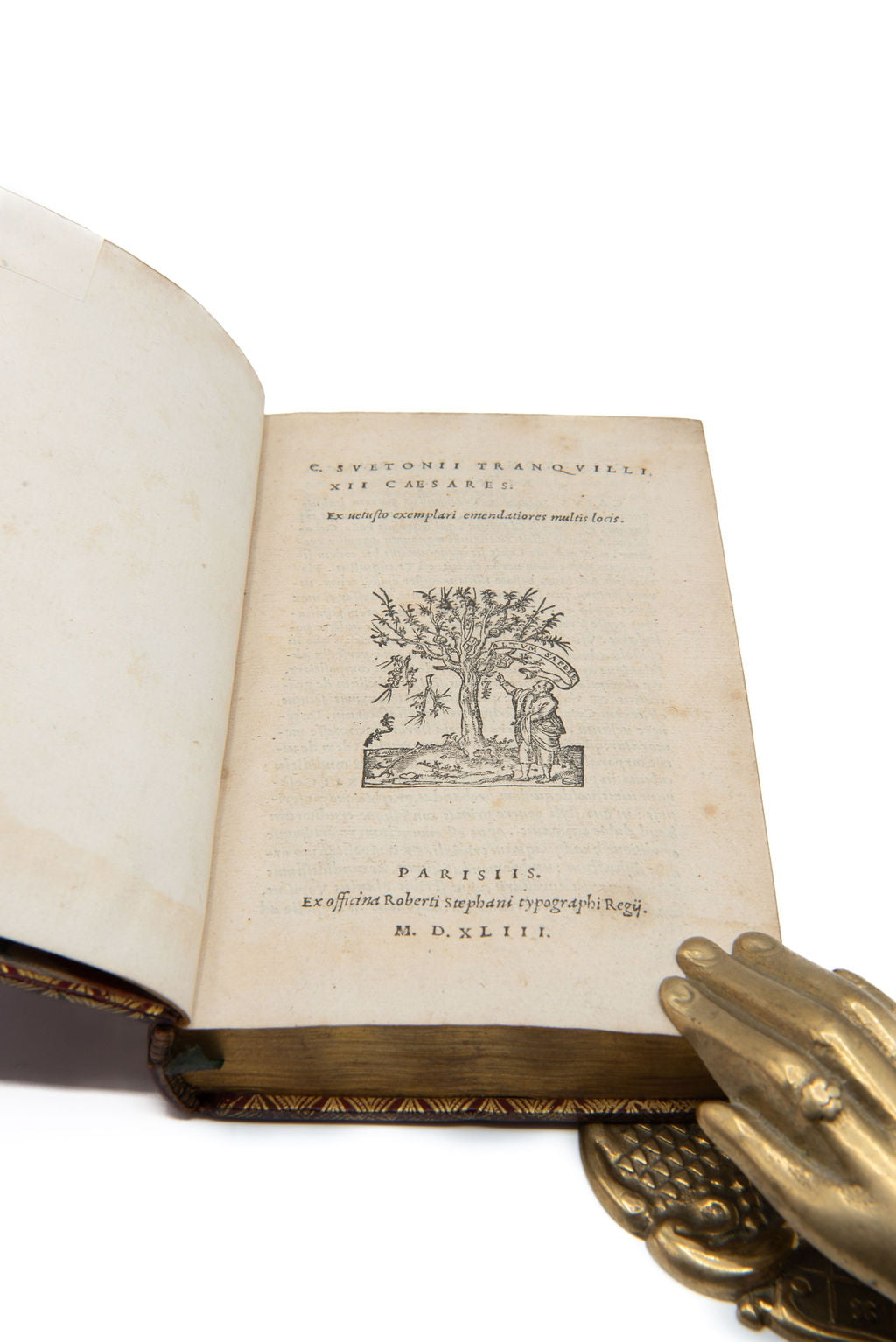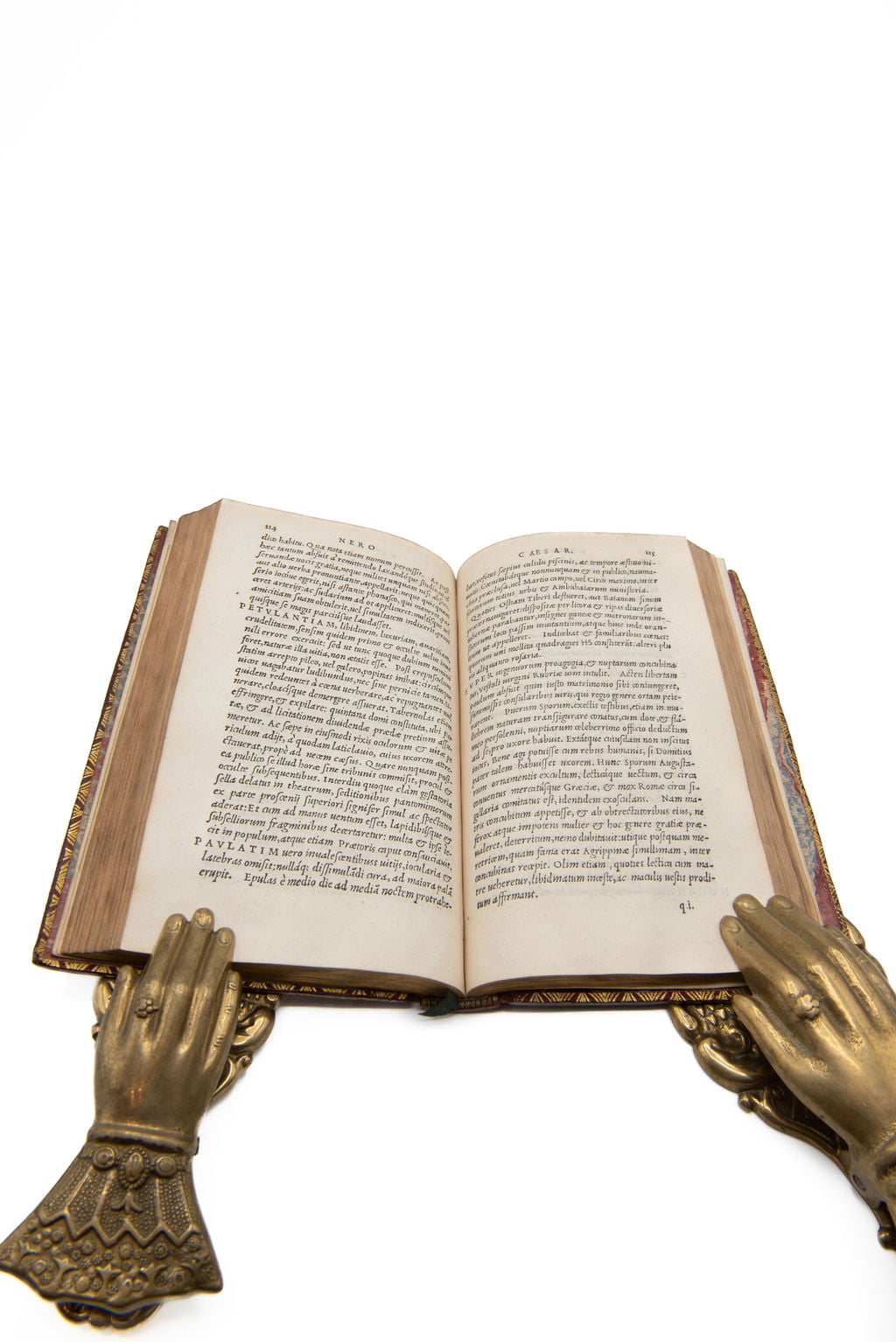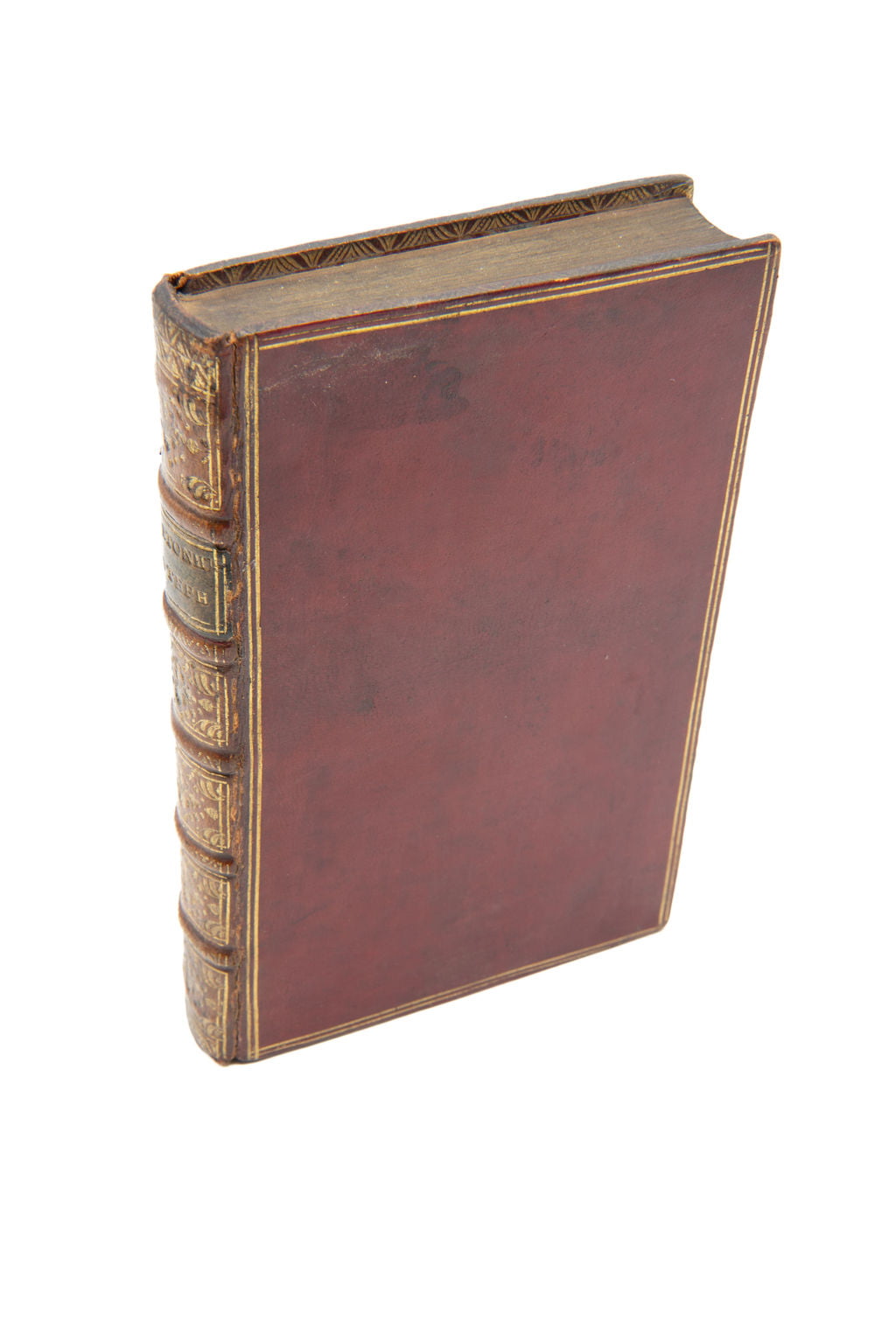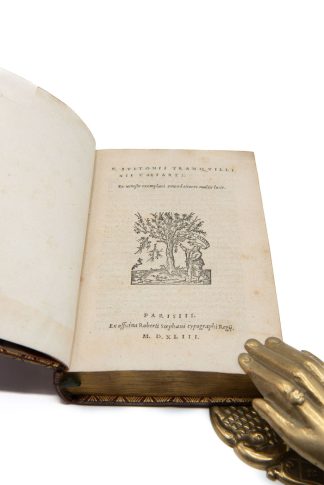SUETONIUS.
XII Caesares. Ex vetusto exemplari emendatiores multis locis.
Paris, Robert Estienne, 1543£1,750.00
8vo, pp. (xvi) 352 (iv). Italic letter, small section in Greek. Printer’s device on t-p (a little dusty). Light age yellowing, small oil splash to first four ll, intermittent light waterstain mainly to some lower margins, repair to upper corner of fly. Marks in pencil to margins throughout. A good, clean, well-margined copy in C18 French red morocco, covers double gilt ruled, spine with a palmette decoration at head, tail and on raised bands, fleurons and leaves tools in compartments, gilt title label, inner dentelles gilt, a little wear to joints. Blue silk bookmark, a.e.g. Bookplate of Robert J. Hayhurst (1929-2016).
An excellent and beautifully bound copy of this important edition of Suetonius’ ‘Lives of the twelve Caesars’, printed by Robert Estienne and considered one of the principal Renaissance editions of this Latin classic. The text was edited and corrected by Estienne himself on the basis of a ‘vetustum exemplar’, an old manuscript which has been identified as the famous Codex Memmianus. Copied in Tours in the IX century, the Codex Memmianus is the oldest and best manuscript of Suetonius that survived, which “may be said to form the basis of the present general text of Suetonius” (Ernesti). The fine 18th century binding resembles in style the bindings made by Pierre-Paul Dubuisson (1746-1762, for the rich design of the gilt decoration in the compartments on the spine and of the endpapers) and of Luc-Antoine Boyet (active 1684-1733, for very similar fleuron on a Boyet’s binding see ‘Bibliothèque Raphaël Esmerian 1972’ No 59, groupe 7).
Gaius Suetonius Tranquillus (AD 69-122) was a Roman historian and biographer. ‘The twelve Caesars’ is his most important and longest work, containing the biography of Caesar, followed by the biographies of the eleven Roman emperors from Augustus to Domitian. Popular and praised in antiquity, this work remains a primary source on Roman history. Each biography begins with the ancestry, followed by early life, political career, physical appearance and private life, a pattern that influenced mediaeval biographers. As Suetonius was secretary at the imperial palace under Trajan, he was able to consult the imperial archives, although he often followed second-hand sources that make his narrative rich in anecdote and rather gossipy. “There is an account of Caesar’s crossing the Rubicon, and a detailed narrative of his assassination; mention of his dark piercing eyes and his attempts to conceal his baldness. Augustus is said to have been short but well-proportioned, with and aquiline nose and eye-brows that met, careless in dress, frugal, and sparing in diet … There is a vivid picture of the grotesque appearance of Caligula, of his waywardness and insane cruelties; of the awkward walk, loud guffaw, and stammer of Claudius … The life of Nero reveals much about his stage displays and his passion for horses … and that of Domitian records his restoration of the libraries which had been burnt down and his efforts to collect manuscripts.” (Oxford Companion to Classical Literature).
At the end, this edition also includes: a series of brief comments on each biography by the Italian philologist Giovanni Battista Cipelli, known as Egnazio (1478-1553), a note to the reader reproduced from Erasmus’ edition of this text printed in 1518 and Egnazio’s translations of a few brief passages in Greek.
USTC 149101; Renouard Estienne 58:11; Adams S2042; Brunet V p. 582; Graesse VI, p. 522; Dibdin II, p. 440. J.A. Ernesti, Fabr. Bibliotheca Latina, Vol. II (1773).In stock





